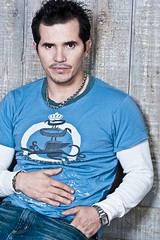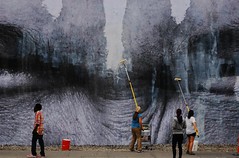From 1980 until 1996, John Leguizamo, the actor, comedian, writer and producer behind such hits as “Mambo Mouth” and “Ghetto Klown,” lived on East Seventh Street. He now resides in the central Village, but he still has roots in Alphabet City: his production offices are headquartered in his old brownstone there; and last month his wife Justine, who sits on the board of the Greenwich Village Society For Historic Preservation, spoke at a hearing that resulted in the landmarking of a block on East 10th Street.
Mr. Leguizamo told The Local that the East Village “will always hold a special place in my heart.” Of course, things have changed since the days when “you’d see Eric Bogosian at the bodega, Steve Buscemi buying a coffee, Iggy Pop at the health food store, Quentin Crisp tottering down the street,” as he wrote in his memoir. Over e-mail, he said, “The neighborhood used to be alive with all different kind of artists. Musicians, poets, painters, actors, singers, dancers. But the rich came in and all the squatters left and went to Brooklyn.”
So what’s there still to love about the “East Vill”? Mr. Leguizamo reflected on some of his past and present favorites. Read more…
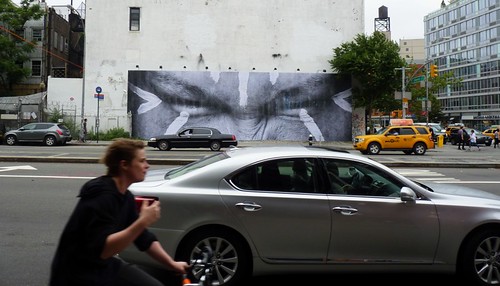 Michael Natale
Michael Natale 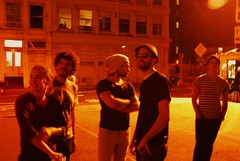 Tim Schreier
Tim SchreierGood morning, East Village.
Another major overhaul took place Thursday at the corner of Bowery and East Houston. A new face, pictured above, has replaced the colorful ghouls painted by artist Kenny Scharf on the Tony Goldman graffiti wall; EV Grieve says it’s called, “Lakota, North Dakota.” Community contributor Tim Schreier shared photos of the work in progress at right.
Local theatergoers will have their last chance to visit Performance Space 122 this Saturday before the venue on the corner of First Avenue and Ninth Street temporarily closes for renovations. Theater Mania reports that the organization — named for the old Public School 122 building it has inhabited since 1979 — will relocate until construction is complete.
Counter will also soon be gone. The vegetarian bar and bistro on First Avenue between Sixth and Seventh Streets told Gothamist that its closing is imminent, although owner Deborah Gavito has yet to give an exact date.
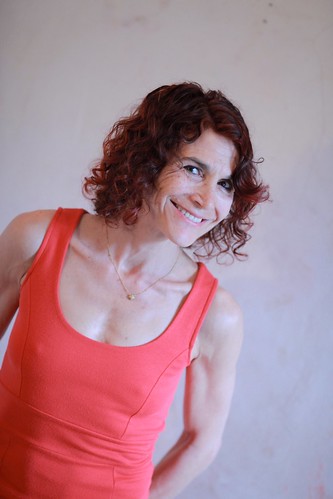 Paula CourtJody Oberfelder
Paula CourtJody OberfelderJody Oberfelder is an East Village dancer/choreographer who started out as the lead singer for the Bagdads, a punk band which played at CBGB’s. She then became a dancer and choreographer who has brought to both roles unusual athleticism, heart, humor, and in the words of Village Voice critic, Deborah Jowitt, “a zest for endearingly human dancing in an upside-down world.”
She has gone from creating works with titles such as “Wanted X Cheerleaders” and “Crash Helmet Brigade” to directing opera (“Dido and Aeneas”) and now Igor Stravinsky’s “The Soldier’s Tale,” which she will present at the Michael Schimmel Center for the Performing Arts at Pace University (where “Inside the Actors Studio” is filmed) from June 9 to 11. Recently The Local spoke to her about her work and how living in the East Village has influenced it.
Q.
You have been part of the East Village arts scene for a long time. How has living here informed your work as a dancer and choreographer?
A.
I’ve lived in the East Village from 1980 to the present, and I saw it change from a place where it was still full of old Ukrainian characters and really scary just to go east of Avenue A. When Life Café came into being on Avenue B, I remember kind of tip-toeing my way over there beside the park. I think I was just one of the many kinds of art-makers and filmmakers who was around at that time. Steve Buscemi and his wife Jo Andres were going to all the same events, and he’s pretty famous now! It was more of a cabaret-ish atmosphere, and you’d stay out pretty late, too. There was a great performance duo called Dancenoise, and also the “Full Moon” shows at P.S. 122. This was the more liquid East Village, more sweaty and physical. There were also people doing more esoteric work at the time.
Read more…
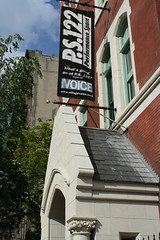 Kenan Christiansen P.S. 122, 150 First Avenue.
Kenan Christiansen P.S. 122, 150 First Avenue.In the late 1970’s, the East Village was “a neighborhood about to become something,” queer performance artist Tim Miller told The Local.
“Previous generations had established, in terms of cultural stuff, their foothold in SoHo, so it was already too expensive and certainly in my mind not nearly as radical in its politics or cultural stance” as the East Village where, he said, the feeling “was so different.” Attracted by this, Mr. Miller and other artists like him began to seek out East Village’s real estate with performance space potential.
Though performance art was not new to the area, with already active venues like popular visual artist hang-out Club 57, experimental art venue the Electric Circus, and theater space La Mama, a new wave of influential artists put down roots in the neighborhood during this time and, in particular, established queer performance spaces that would become recognized cultural institutions and cornerstones of the performance art world.
In 1980, Peggy Shaw and Lois Weaver, founding members of lesbian performance art group Split Britches, organized the first annual Women’s One World Festival or WOW, a showcase plays by women authors, at the now defunct Electric Circus Club. Ms. Shaw and Ms. Weaver mounted the festival, “to fill this big dark hole. It was this big vacant space of nowhere for lesbians to perform,” according to Ms. Shaw. To advertise, she told an audience at a queer spaces forum last December, she hung huge banners along St. Marks featuring hand-drawn pictures of naked women.
Read more…



